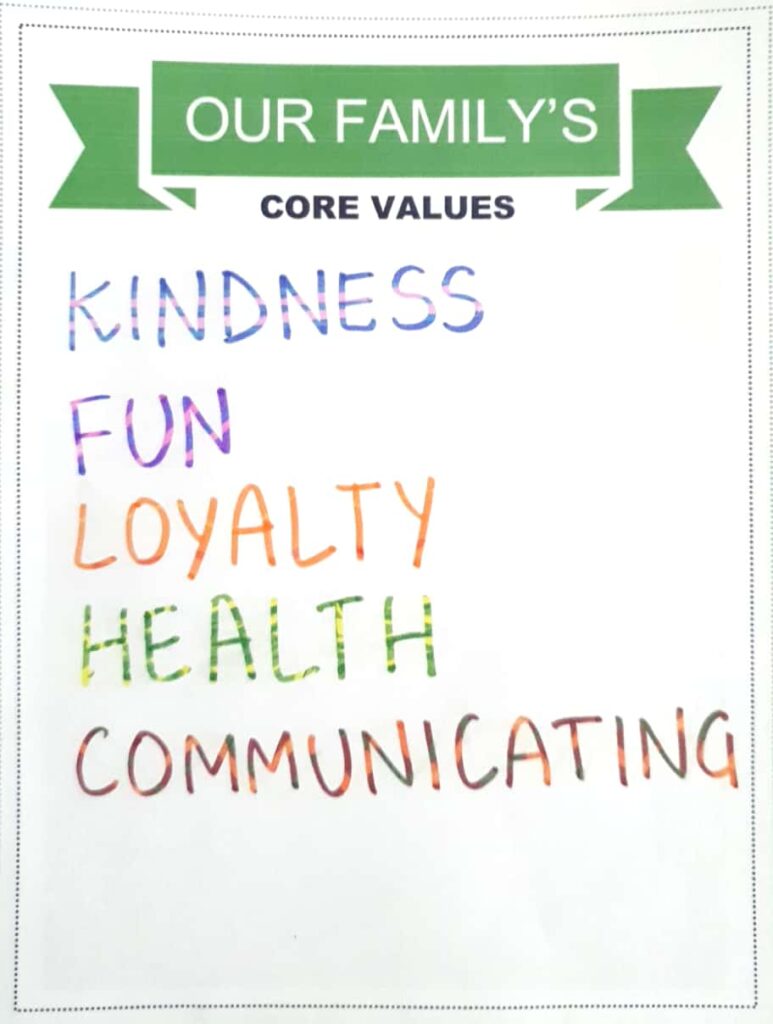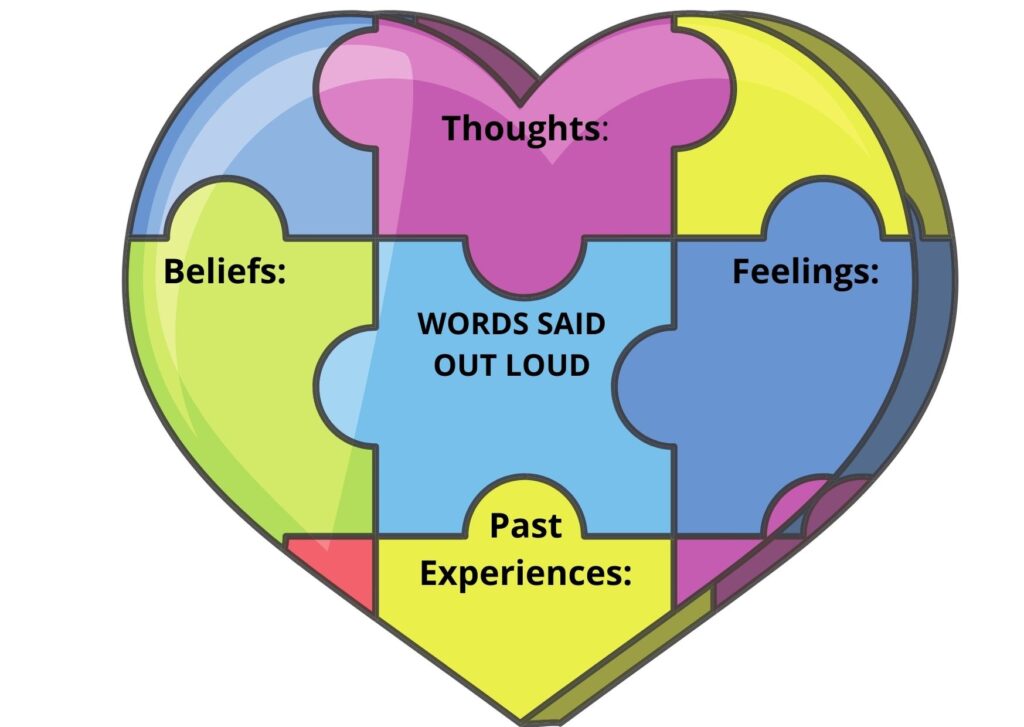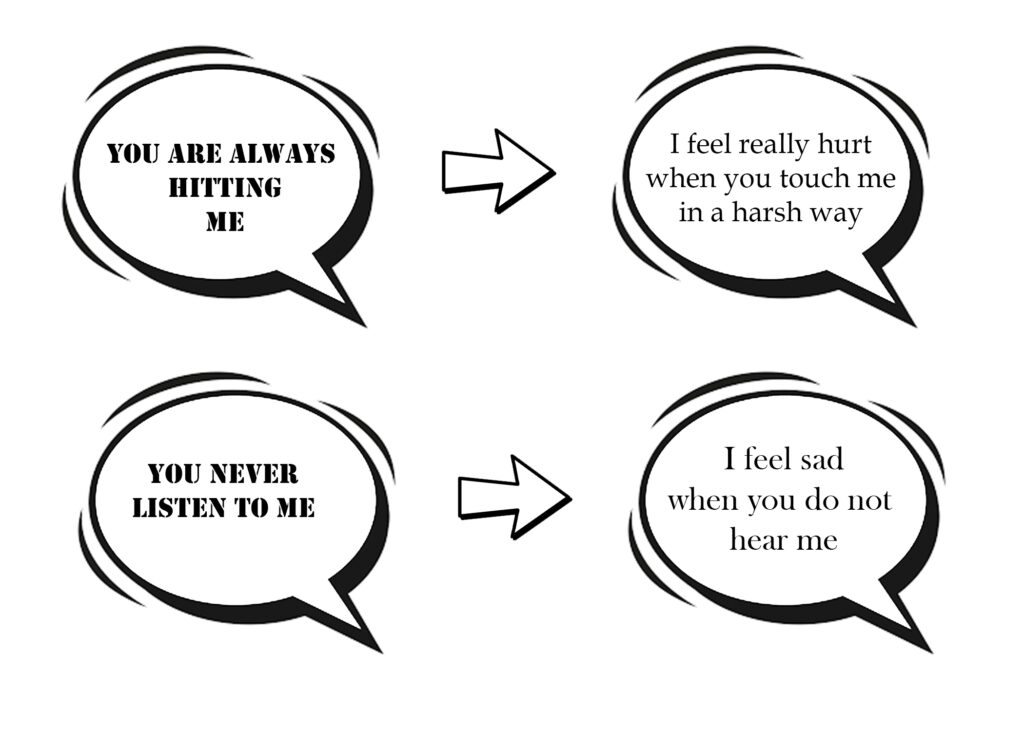Every sibling fights. It could be toddlers arm wrestling, teenagers locked in a verbal battle, or adults fighting in court. Sibling fights are inevitable. But they are also great opportunities for emotional regulation and if dealt with appropriately – sibling rivalry can turn into great sibling relationships.
However, before we focus on our kids, we need to focus on our behaviors, patterns, and thoughts. Here are three basic ideas to start with.
1. The Idea Of the Perfect Behavior
When we are about to be parents, we all fantasize about having a perfectly behaved child. The first and foremost reason being that compliance is easy to do deal with and reflects highly upon our reputation. After much introspection, I concluded this fallacy also included the unfulfilled wants & dreams of my inner child.
It is a trap that leads to fights, anger, disappointment, feelings of powerlessness, loneliness, and helplessness because we are not dealing with the child in front of us. We are dealing with our prejudice and beliefs on how they should be.
To know my experience and how I finally overcame this notion of perfect children, please read Bursting Parenting Myths: Wasn’t My Child Supposed to Be Like Me
2. The Idea of Perfect Relationship
Now that we have established that perfection is a myth, now it’s time to release the notion that our kids will never fight. My children are 2 years and 9 months apart. My son is the older child. When I was growing up I had a friend who had an older brother who doted on her and I wanted that relationship for my kids.
But I was in for a rude shock! Again.
There have been days I have physically parted them with great force, forcefully taken one out of the room, or even used my body as a shield to cover one from the other. All force was used only to keep them both safe from each other.
But slowly I let go of this idea of what relation they should have and began to work on what they do have. It is not like they always fought. There were rare moments of peace and camaraderie. So I began to strengthen those and through observing and listening found common subjects of arguments.
Below I have shared the techniques I used and today they are in a far better place. I cannot say they never fight but from an everyday affair, it has turned into a rare event. And it gets over much faster! Yay to that:))
3. The Idea Of Fairness
Another biggie to me was being the queen of justice. Everyone should be treated fairly. But the problem was that my children had very different personalities, needs, growth parameters, and needed to be treated differently.
For example, my son’s favorite dialogue for a long time became – ‘It’s not fair.’ It soon became my daughter’s go-to mantra too. And I wasn’t being able to see a way out. Then it struck me.
I have never compared my children because I know and respect their differences but they ended up comparing themselves because I treated them the same! I realized my aim must be equity, not equality.
Equality means everyone is treated the same but equity means everyone is given the support and empowerment needed to thrive. This is based on their personality, growth, and need.
So now we have changed birthday, gifting, allowance, chores rules according to maturity, age, natural ability, and unique intelligence. To know how kids are born with multiple intelligences please read, The 8 Great Ways We Are Smart
With a lot of role modeling and connecting they also know that love and behavior are not connected. Just because I spend time with one doesn’t mean my love for the other diminishes. By no means I am advancing the preferential treatment of one child. I am truly against that.
I am saying that we love our kids equally and need to spend time with them. Only the way we spend that time can differ according to the situation and personality appropriateness of the child.
During The Fight
When tempers are running high, fewer words and more deep breaths are the best ideas.
Step 1 – Anchor
Before you regulate kids, regulate yourself. Check how your body is reacting to seeing them hurt each other. Breathe. Take 3 deep breaths and separate them with calm. Be the calm of their chaos.
Once separated if they still continue shouting/hitting, ask them to step away to their happy corner/end of the room or a different room. Ask them to breathe. A wonderful technique is to use Anulom Vilom. Click here for video.
I have used this multiple times with my 8-year-old daughter and she gets so engrossed in getting it right that it serves as a relaxing distraction.
Another way to anchor for kids is to imagine a huge anchor docking their ship in turbulent waters. Ask them to make up the shape and colors of their personal anchor. Decorate it with people who inspire them. So when their temper rises, call upon the anchor and feel it running from top to bottom of your body with a huge deep breath.
Feel the body relaxing and regaining calm as this anchor holds you together. You got this!

Step 2 – Enquire
They have just passed through a stressful situation so our response must be filled with curiosity, concern, non judgement and empathy.
If they are physically hurt, please first respond to that. After that is taken care of here are a few things to start the conversation without placing blame and shame:
- I feel there is a story here?
- I feel your frustration with your brother/sister. Want to talk about it?
- I noticed you were more upset than usual…would you like to tell me something?
- You look tired and hungry. Let’s make a quick snack. We can continue the conversation while we eat?
- I know you are deeply hurt. I am here for you. Let’s chat when you are ready.
The best way to cope with fights is to anchor and honestly listen. These are not teaching moments. Only listening and responding with empathy. Your role is to be the calm and diffuse the situation. Hear them out and observe patterns.
The teaching and building moments come when they are regulated, happy and connected. They are in the receiving zone. These are the moments you intentionally create for a peaceful and loving family environment. They may not show immediate effects, but they do. And my kids are the best example I have.
Now lets dive into the 6 techniques I used to make my kids comrades instead of opponents.
6 Techniques for Great Sibling Relationship
1. Identify Family Values
Values are the bedrock on which families grow. For children shared values and family history give a sense of belonging. A great start is to intentionally create a family culture of understanding and respect.
Values create deep roots and they can help to formulate a strong culture. To do so take your most prized value and make a family mantra. For our family it is kindness. So our family mantra is – ‘Kindness is the most important thing in the world’. You can also create any daily or weekly activities which reinforce your family’s 5 most important values.
Below given are our family’s 5 values:

To know more about the importance and steps of identifying values, please read: Values: Meaning, Importance and Benefits
Values & history help kids find common ground and find a way back to each other in difficult times.
2. The Heart Of Understanding
This truly worked wonderfully for my kids. As we have discovered all behavior is communication. If you would like to know more on this thought please read: Bursting Parenting Myths: Wasn’t My Child Supposed To Listen To Me(Part 1)
So behind words hurtful spoken out loud are hidden feelings of resentment, fear, rejection, disappointment, or loss. There are thoughts of hate are due to past experiences and deep rooted beliefs. The uncovering of these reasons behind the hurtful words will lead to true healing and peace.
The graphic below is the heart of understanding. One child needs to write the most hurtful words or sentences said by their sibling and then that brother/sister will write their thoughts, feelings, experiences, and beliefs behind the word. They can even act out and show how their bodies react when that particular hurtful word/sentence is spoken.

This exercise will create self-awareness and empathy. Understanding another’s feelings and perspective is the first step to finding creative, peaceful, and long-term solutions to problems.
3. Change The Script
Much of what we say is communicated through expressions and tone but words do matter. If we can help our kids listen more and respond carefully to each other, we build a truly essential life skill for all-important relationships.
To learn more on techniques of communication, please read: The Art & Craft Of Conversation
Change the ‘You’ to ‘I’
When we begin with you it is to find blame. When we begin with I it is to take responsibility for how we are feeling. The ‘I feel statements’ help to assertively communicate our feeling without blame or shame. Thus it transforms the receiver from being defensive to being open to listening.

Ban ‘Always’ and ‘Never’
Two words used to create a dramatic effect on past recollection and future promises are ‘always‘ and ‘never‘. However, they rarely bring about any positive effect because of their absolute nature. Again the tone of the conversation is blame and shame.
And think about it. Is it really always? Accurately it is sometimes or most of the time or rarely. Similar to the concept of there being no black and white but a lot of grey areas. Prohibiting these words in all family conversations will help create an atmosphere of positivity and accountability.
Be Siri
Say what you notice. Describe the fact instead of giving an opinion. Facts are undeniable and pique interest. Opinions garner negativity and have the underpinnings of judgment, anger, and disappointment.

4. Develop Creative Thinking & Problem Solving Skills
The idea here is that one problem may have many solutions. The approach here is not to direct but to enquire. To be curious. To be imaginative.
With shared values, having an understanding behind the words and changing the script this can be an essential life skill for positive, respectful and peaceful negotiation.
When family problem-solving sessions are created to address certain situations and ask everyone for solutions it serves as a great role model for children to have these forums when they run into an issue. We hold problem-solving sessions every Sunday afternoon and it works miracles.
To know more about how to create family problem solving sessions, please read: Problem Solving Skills & Steps
5. Training Program
If you have kids with totally differing personalities then this will work well. The idea is to celebrate each child’s individuality as well as help their sibling understand and benefit from their perspective and expertise.
For example, my daughter is good at art & crafts and my son is good at building things. So for one week, I gave them the task to train each other in their chosen area of expertise. So my son taught my daughter how to build robots and my daughter taught him how to make a friendship bracelet.
They loved being the trainer and spending positive time together. Now they even help each other in their school subject of expertise. Art, Music, and English for my daughter and Math, Science, and Computer programming for my son.
The task taught them patience, kindness, being supportive, empathy and celebrating their differences.
6. The Fellowship Jar
To reward and acknowlegde all the efforts your children are putting in, take an empty glass jar and decorate with flowers, paint and sparkles.
They can write about the following things and put them in the jar:
- An activity accomplished together
- A compliment to a sibling
- Something they are proud of
- Any achievement applauding their sibling
- An idea about a future family activity
- A new solution to any ongoing problem
- An idea for the next family vacation
The encompassing idea being to celebrate others, ourselves and family togetherness. This will help them see how far they have come and develop an attitude of gratitude.
For my kids, I had made the above-listed techniques into a 6-week challenge. Each week we worked on one technique. They are also listed in that order. So the first week was talking about values. The second week was printing the heart of understanding and making them write that one word that triggered them. Understanding the emotions and beliefs behind the word healed their relationship. Then the third week we changed the tone and words they spoke to each other. Each skill built on the last to facilitate long-lasting change. And so on and so forth.
I hope you find these techniques as useful as I did and truly wishing that they bring about an atmosphere of peace, love, and friendship in your home.
Please leave a comment on which technique worked for you and anything else you tried with your kids? Would love to hear more ideas!

